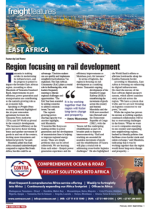Demand for warehousing is expected to increase over the medium term due to the growth of e-commerce, logistics and manufacturing.Kenyan demand is being driven by the government’s implementation of its Vision 2030 policy to transform the economy from one reliant on agriculture to a middle-income industrialised country, according to Charles Macharia, head of research and strategic consulting at Knight Frank Kenya.Inward international investment is being attracted by the establishment of Special Economic Zones (SEZs) and Export Processing Zones (EPZs). He cites the Nairobi Gate Industrial Park as an “innovative ‘build-to-suit’ concept” which offers Grade A f lexible space, optimal accessibility, efficient circulation and ample loading facilities, “all of which are key considerations for occupiers, particularly those of the international variety,” he writes in the 2024/25 edition of the Knight Frank Africa Report.Kenya’s “green-manufacturing” strategy has resulted in warehouse space being taken up by assemblers of e-bikes and e-motorcycles. This has contributed to prime warehouse rentals rising by 20% over the past six years, now averaging $6 m2.Economic growth of around 5.7% in 2024 and a projected 6% in 2025 is boosting demand for warehousing in Tanzania, particularly along Nyerere Road, Dar es Salaam’s prime industrial area, according to the report. Rental growth has been modest due to an oversupply of warehousing, remaining stable at $5 m2 for the past four years.Demand is expected to rise over the medium term, driven by recent offshore natural gas discoveries and government investment in projects such as the $1.9bn national standard-gauge rail network spanning 1 219 km. Consulting firm 6Wresearch reports that there is rapid expansion of the warehouse and storage market in Ethiopia due to increased trade volumes and infrastructure investment.Ethiopia is strategically placed as a gateway to the Horn of Africa, with growing demand for traditional and modern warehousing, including cold storage, automated facilities and distribution centres. Given a rise in retail, e-commerce and manufacturing sectors, warehousing and storage facilities are becoming crucial for supply chain efficiency, with the sector attracting investment, according to 6Wresearch.Capital News reports that rentals have effectively doubled from a previous average of $2.75 m2.Hillary Mbaihayo, head of research and strategic consulting at Knight Frank Uganda, says there is increased demand for best-in-class warehouses in the country due to business growth and an improved economic outlook.The agro-processing, energy, construction, cold storage and tech sectors are the primary sources of demand.Demand for space ranging from 300-1 000 m2 has risen, due to growth in the automotive, manufacturing, interior design, pest control, pharmaceuticals and beverages sectors.The government established four new SEZs in 2022/23, bringing the total to 35. ER

